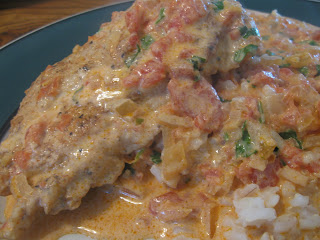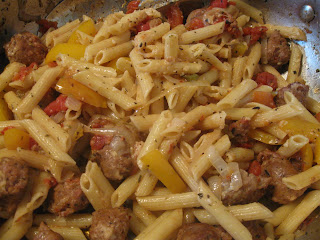 There's nothing like homemade cinnamon rolls. For years and years I made the kind you get out of a can. In fact, it is our tradition to have them on Christmas morning before we open presents and while the ones from a can are really, really good, homemade ones just can't be beat. But, who wants to get up at 5 a.m. to make cinnamon rolls? Not me. So, first I'll give my recipe and then I'll tell you my secrets for having them ready when I want them, not the other way around. The first picture above is what they look like before I put them into the oven. They have risen nicely.
There's nothing like homemade cinnamon rolls. For years and years I made the kind you get out of a can. In fact, it is our tradition to have them on Christmas morning before we open presents and while the ones from a can are really, really good, homemade ones just can't be beat. But, who wants to get up at 5 a.m. to make cinnamon rolls? Not me. So, first I'll give my recipe and then I'll tell you my secrets for having them ready when I want them, not the other way around. The first picture above is what they look like before I put them into the oven. They have risen nicely.Cinnamon Rolls
6 oz. (3/4 cup) milk (90-100 degrees)
1 egg
3 cups flour
3 tablespoons sugar
1/2 teaspoon salt
4 tablespoon butter
2 teaspoon active dry yeast
Filling:
1/3 cup butter
1/2 cup sugar
2 teaspoons cinnamon
In your bread machine pan, place the dough ingredients in the order given or according to your bread machine instructions. Place machine on Dough setting and start. When the dough is done (about 1 hour 20 minutes) place dough on a floured surface. Roll dough into an oblong shape of 9 inches by 18 inches. Spread with the butter and sprinkle with the cinnamon and sugar. Roll up tightly, beginning at wide side. Seal well by pinching edges of roll together. Cut roll into 1 inch slices. Place a little apart in a greased 13" x 9" pan or 12 muffin cups.
Cover and let rise until double in bulk (about 1/2 hour). Bake until golden brown and completely baked through at 375 degrees, about 20 to 25 minutes. Makes one dozen rolls.
If you want to wait until the next morning to bake your rolls, immediately after rolling and cutting them and placing in the pan, cover with a towel and put in the refrigerator over night. The next morning take them out of the fridge and allow them to rise for about 30 minutes, then bake as above.
If you want to freeze them, immediate after shaping and cutting, place the rolls on a pan and put them in the freezer. When they are completely frozen, place them in a freezer bag and freeze until you are ready to use them. The night before you want to bake them, take them out of the freezer and place on your pan. Cover with a towel and let set overnight. The next morning they will be risen and ready for the oven.

The glaze we usually spread on the warm rolls is a simple one.
Glaze:
4 tablespoons butter, softened
2 cups powdered sugar
1 teaspoon vanilla
3-6 tablespoons hot water
Combine the butter, powdered sugar and vanilla together, adding enough of the hot water to make a smooth thin glaze. Spread on the warm rolls and enjoy!
I'm participating in Foodie Fridays and Grocery Cart Challenge's Recipe Swap








